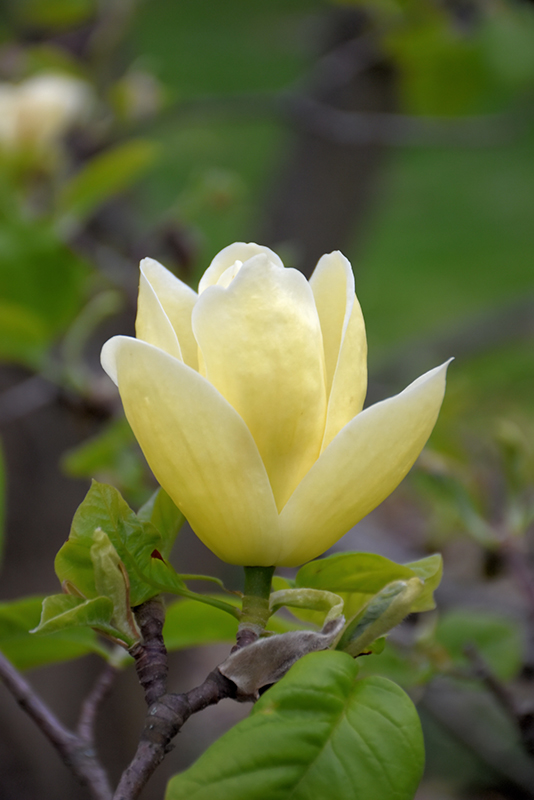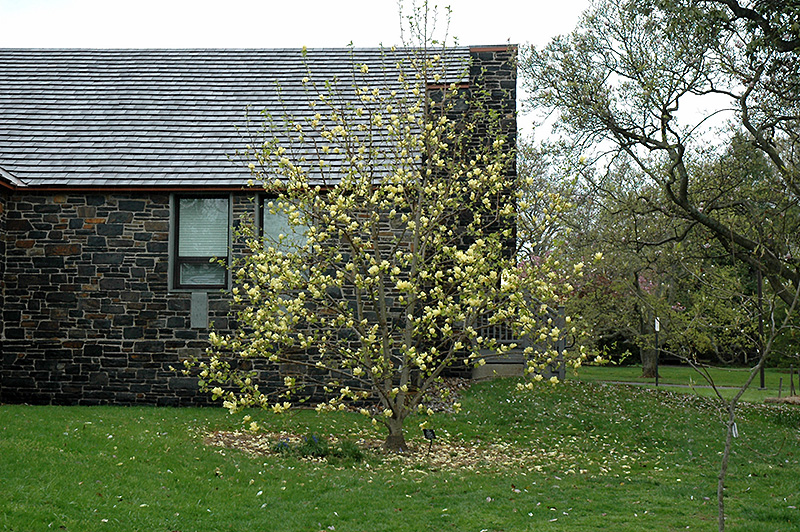Looking for a particular Plant? Try our Plant Finder Tool.
Height: 30 feet
Spread: 20 feet
Sunlight:
![]()
![]()
Hardiness Zone: 4b
Description:
A stunning magnolia that produces luminous yellow blooms that pale as they mature; a small tree or large shrub with a conical form and large relatively coarse leaves; flowers stay in bloom for several weeks; an ideal landscape or garden accent
Ornamental Features
Lois Magnolia is covered in stunning fragrant yellow cup-shaped flowers with buttery yellow overtones held atop the branches in mid spring before the leaves. It has dark green deciduous foliage. The large pointy leaves turn coppery-bronze in fall.
Landscape Attributes
Lois Magnolia is a deciduous tree with a distinctive and refined pyramidal form. Its relatively coarse texture can be used to stand it apart from other landscape plants with finer foliage.
This is a relatively low maintenance tree, and should only be pruned after flowering to avoid removing any of the current season's flowers. It has no significant negative characteristics.
Lois Magnolia is recommended for the following landscape applications;
- Accent
- Shade
Planting & Growing
Lois Magnolia will grow to be about 30 feet tall at maturity, with a spread of 20 feet. It has a low canopy with a typical clearance of 2 feet from the ground, and is suitable for planting under power lines. It grows at a medium rate, and under ideal conditions can be expected to live for 50 years or more.
This tree does best in full sun to partial shade. It requires an evenly moist well-drained soil for optimal growth, but will die in standing water. It is not particular as to soil type, but has a definite preference for acidic soils. It is quite intolerant of urban pollution, therefore inner city or urban streetside plantings are best avoided. Consider applying a thick mulch around the root zone in winter to protect it in exposed locations or colder microclimates. This particular variety is an interspecific hybrid.




